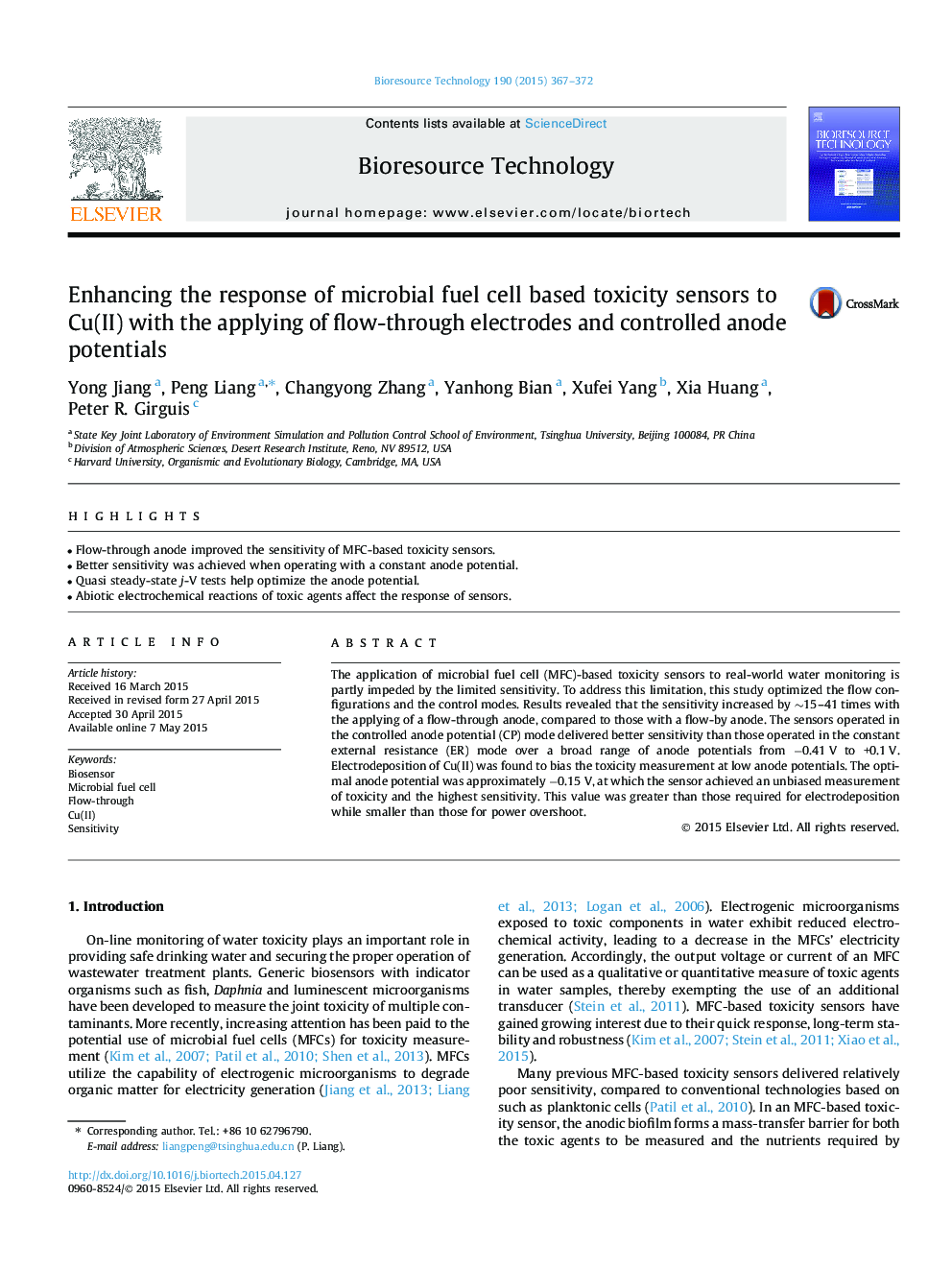| Article ID | Journal | Published Year | Pages | File Type |
|---|---|---|---|---|
| 679666 | Bioresource Technology | 2015 | 6 Pages |
Abstract
The application of microbial fuel cell (MFC)-based toxicity sensors to real-world water monitoring is partly impeded by the limited sensitivity. To address this limitation, this study optimized the flow configurations and the control modes. Results revealed that the sensitivity increased by â¼15-41Â times with the applying of a flow-through anode, compared to those with a flow-by anode. The sensors operated in the controlled anode potential (CP) mode delivered better sensitivity than those operated in the constant external resistance (ER) mode over a broad range of anode potentials from â0.41Â V to +0.1Â V. Electrodeposition of Cu(II) was found to bias the toxicity measurement at low anode potentials. The optimal anode potential was approximately â0.15Â V, at which the sensor achieved an unbiased measurement of toxicity and the highest sensitivity. This value was greater than those required for electrodeposition while smaller than those for power overshoot.
Related Topics
Physical Sciences and Engineering
Chemical Engineering
Process Chemistry and Technology
Authors
Yong Jiang, Peng Liang, Changyong Zhang, Yanhong Bian, Xufei Yang, Xia Huang, Peter R. Girguis,
